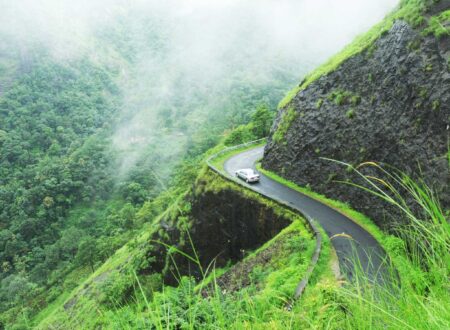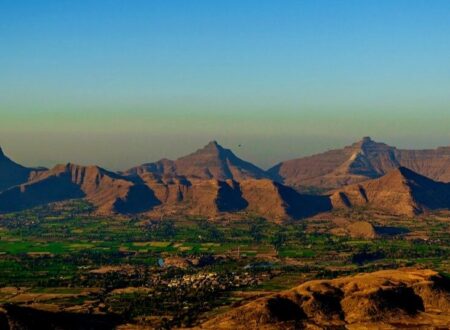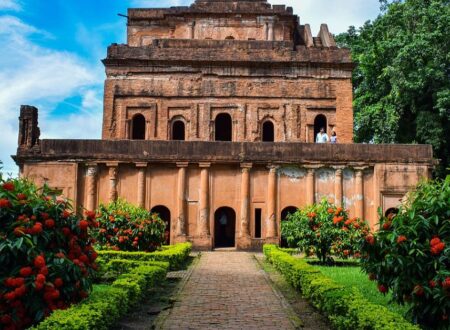Exploring Architectural Marvels of India as per cultural empires.

Today, Indian Cultural diversity can be confusing for someone who adores architectural heritage. However, if you want to explore the Architecture of India and get architecture inspiration, we have your itinerary sorted. That said, Pick your Architectural preference below and let us take care of your next destination:
The Rajputana Dynasty and their ‘Hill’ Forts:

- Chittorgarh Fort: It is located on the banks of Berach and Gambhiri River. Chittor Fort is not only the Largest fort in India but also in Asia. In addition, The fort has 7 pols( gates), 2 towers and 65 structures. Coupled with, the Fort’s 22 water bodies that still exists today. The fort also has 19 temples, 4 memorials and victory towers surviving today.
- Jaisalmer Fort:- This is the oldest fort in India, also known as Golden Fort or Sonar Quila. It is the main highlight of the desert city of Jaisalmer. King Rawal Jaiswal laid the foundation of this fort. Furthermore, this fort is built completely using yellow sandstone giving the fort a golden hue. The fort is also known for its defence architecture. Walls protecting the inner territory of the fort create a triple ring-like circular border around the fort. Moving on, The fort has 4 humongous gates, 7 Jain temples, Laxminath Temple, Raj Mahal Palace, and many merchants Havelis.
The Mughal Sultanate and their ‘Nayab’ jewels of Architectural Marvels:

- The Taj Mahal: This mausoleum remembered as an ode to love was built by Shah Jahan. He is also regarded as the father of Mughal Architecture who built the taj for his favourite wife Mumtaz. Taj Mahal today is a UNESCO World Heritage Site and is regarded as the jewel of Muslim art in India. The tomb of the Taj Mahal is built over a humongous 42-acre land. Meanwhile, it also houses a mosque and guest rooms. Shah Jahan prominently used White Marble for all monuments he built with splurging use of semi-precious stones.
- Humayun’s Tomb: Persian architects were hired by the emperor’s first wife Haji begum to build this tomb. However, It was the first monument to use sandstone in such large proportions. Also, it was the first mausoleum to have the ‘char bagh’ ( Persian paradisiacal gardens) concept in India.
Buddhist Architecture and the connection with Spirituality:

- Sanchi Stupa, Madhya Pradesh: Ashoka The Great- The Mauryan Emperor built the oldest Buddhist stone monument that exists today. A simple dome-like structure using bricks and stones was erected. However, an eminent feature that stands out in the architecture of the stupa is the story narrated through Brahmi Inscriptions. Found on the stone walls and toranas (gateways) of the stupa. In addition, It is said that The Buddha’s ashes were enshrined and worshipped in stupas built by Emperor Ashoka.
- Mahabodhi Temple, Bodh Gaya, Bihar:- Thi site is a Pilgrimage to Buddhist Followers across the world today. Bodh Gaya is a religious site where Gautam Buddha gained enlightenment under the Bodhi Tree. Emperor Ashoka constructed this holy site. The Mahabodhi Temple comprises of Diamond throne and also the pious Bodhi Tree.
Contemporary Indian Architecture observed in Public Spaces:

- Lotus Temple, Delhi, India: This site has been a big hit in the Architectural world. The flower-like place of worship has been recognised and awarded for its unique architecture ever since its formation. The Temple is also an example of Expressionist architecture. Freestanding petals are furthermore a revolutionarily bold move in the world of Indian Architecture. The scientifically well-planned structure today radiates spirituality.
- Jawahar Kala Kendra, Jaipur, India: Kendra Takes Inspiration from Indian Roots and a predominant concept of ‘Vastu Vidya’. the Jawahar Kala Kendra was built in 1992. This site was built by the Rajasthan Government. It has also been Conceptualised according to the then Maharaja Jai Singh. In addition, the nine squares represent nine planets of the solar system as per Hindu Beliefs.
Top-Down or Bottom-Up? Answer: Step Wells and their Unique Infrastructure:

- Rani ki Vav, Patan, Gujarat: One of its kind this step-well is also an inverted temple built in honour of water deity. This step-well has 7 levels, 500 statues and art pieces. An architectural masterpiece, this step-well has intricate details and carvings.
- Agrasen ki Baoli, Delhi: similar to the Rani ki vav, Ugrasen or agrasen ki baoli is also a step-well temple. However, there is no historical record of who built this step-well. It was originally built by Ugrasen or Agrasen. Furthermore, The stepwell has 108 steps and 3 levels to it.
Caves and Architecture of Maharashtra:

- Ellora Caves, Aurangabad, Maharashtra: To begin with, The caves are one of the largest rock-cut Hindu temples in the world. Ellora caves are famous for the Kailash Temple, a tribute to Lord Shiva. It is built using one huge monolithic rock. However, The architectural marvel of the infrastructure raises many questions regarding the whereabouts of the rock-carved.
- Ajanta Caves, Aurangabad, Maharashtra: These are predominantly Buddhist Caves with about 30 rocks being cut for making these exemplary caves. It is also one of the best examples of Indian architecture. In addition, these caves are also Regarded as Buddhist religious art masterpieces. The caves are truly examples of ancient Indian art. Furthermore, A notable feature of the Ajanta Ellora Caves is the paintings that are still found inside on rocks and boulders.
Victorian Architecture across the City of Mumbai and Kolkata:

- Victoria Memorial: As the name suggests, this memorial hall was built in memory of Queen Victoria after her death in 1906-1921. Even though it was Highly influenced by British Architecture, the use of Indian material can be observed. Material like white marble from Rajasthan, and many more were used in the making of the memorial.
- The Victorian and Art Deco Ensemble of Mumbai: In 2018, the Victorian public buildings in the city of Mumbai were declared as UNESCO World Heritage sites. These public buildings include- The Bombay High Court, the Rajabai Tower clock, as well as the University of Mumbai, addition to Jehangir National Gallery of Modern Art and many more.
Churches, Chapels and Cathedrals of Goa:

- St. Cajetan Church, Goa: also known as the Church of Divine providence, Has Architecture inspired by the Corinthian Style. The church has 7 altars, and 4 figurines of Saint Paul, Peter, John the Evangelist, and Matthew. Also, the church is a World Heritage site and a part of the Churches and Convents of Goa.
- Basilica of Bom Jesus: A Roman Catholic Church located in Old Goa, is famous for Relics of St.Francis Xavier. The church has a Baroque style Altar with the Sacred Body of St.Francis Xavier kept in between the Basilica. It is furthermore bought down after every 10 years for people to visit and take the blessings of the saint. The Basilica has wooden carvings and sculptures engraved onto the walls of the church.
Bonus Architectural Marvels of India:

- Khajuraho, Madhya Pradesh: This temple is made keeping in mind the Hindu Temple architecture. The deity is placed in the womb chamber called garbha griha that also has space around the deity for pradakshina. Khajuraho depicts all aspects of Hindu and Jain architecture. Specifically with regards to the use of squares and circles according to Vastu Shastra. However, Only 10% out of the 90% of sculptures depict erotic pleasures or the phase of kama in life while the rest depict normal day to day life.
- Konark Sun Temple, Odisha: Built by Narsimhadeva I of the Ganga Dynasty, Konark Sun Temple is dedicated to Sun God Surya. It is especially famous for the architectural appearance of a Chariot on Wheels and carved horses out of Stone. Most parts of the temples have turned to ruins today but is still a UNESCO World Heritage site.
- Hampi, Karnataka: This Ancient Village is famous for the abandoned ruins of the Vijayanagar Empire. The ruins were caused because of a battle in 1565. As the ancient village was left burning for 6 months and was looted and abandoned later. Similar to the Konark sun temple, a miniature chariot on wheels is a tourist attraction in Hampi.
Also read : Hampi: Exploring The Lost Heritage of India
- Shanivaar Wada, Pune, Maharashtra: A 7 storey Fort built by Peshwa Bajirao l is famous for jharokhas, enormous gates, gardens, and much more. However, A unique feature of the architecture here is the walls are built partly using stones and partly using bricks. Since The Peshwas were not allowed to build forts using stones under the leadership of the then king Shahu Maharaj.

To put it Briefly, India hands down is one of the best places in the world if you are looking for Architecture Inspiration. Examples from all varieties of architectural infrastructure can be found today. Be it Ancient, Medieval, or Modern Architecture, India stands tall on its Culturally and Architecturally Rich Fortresses and monuments.
Follow India Chalk on Instagram for more amazing travel content. You can share your travel story with us. Reach out to us on email at contact[at]ndiachalk[dot]com. This blog is curated by India Chalk and written by Megha Spare .







2 Comments